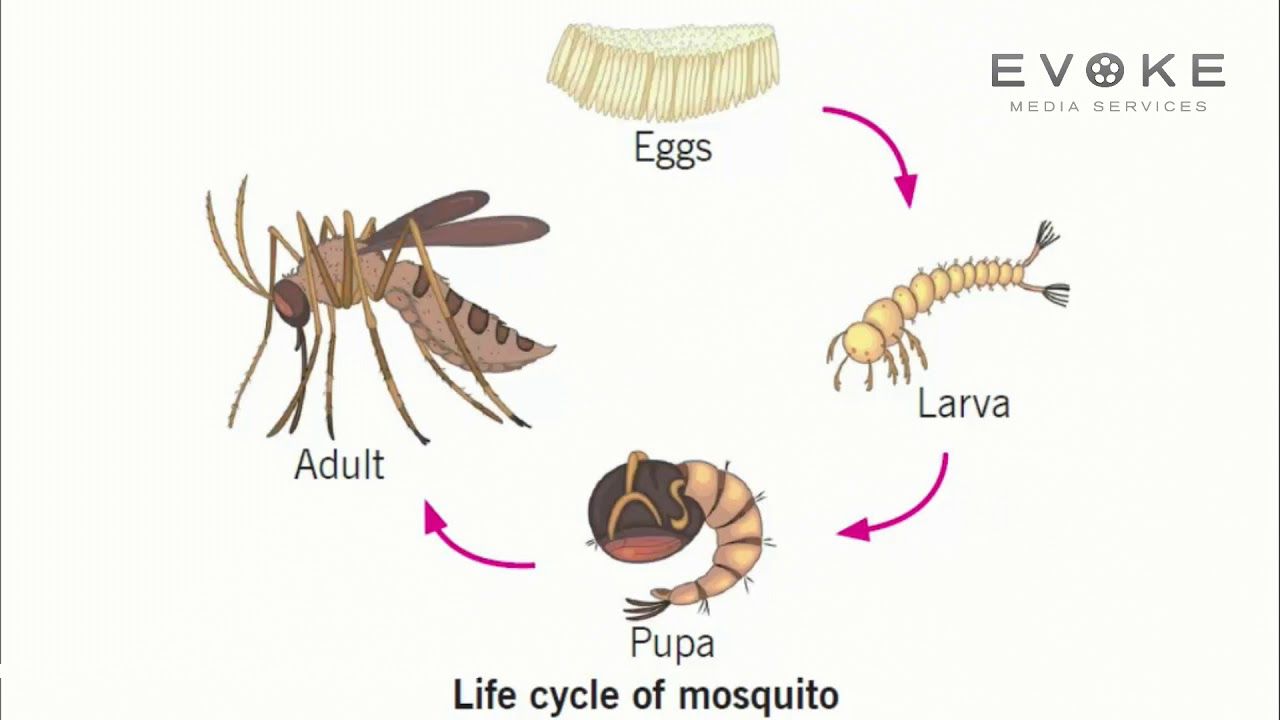Mosquitoes are not only annoying pests, but with that, they are also one of the most common causes of numerous diseases that affect millions of people throughout the globe.
Understanding the life cycle of mosquitoes is very essential for effective pest control Cranbourne. In this article, we are going to discuss the different stages of a mosquito’s life cycle. Let’s get started!
The Life Cycle of Mosquitoes: Four Stages
Mosquitoes undergo a complete metamorphosis that includes four distinct stages: egg, larva, pupa, and adult. This process, known as holometabolism, allows mosquitoes to adapt to various environments and ensures their survival and proliferation.
1. Egg Stage
Description and Behavior
Mosquitoes begin their lifecycle as eggs. Female mosquitoes lay their eggs on or near water sources, as water is essential for the development of the larvae. The type of water body preferred varies among species, ranging from stagnant ponds and marshes to containers, puddles, and even damp soil. Some species lay eggs singly, while others lay them in clusters called rafts.
Duration
The duration of the egg stage can vary depending on the species and environmental conditions. In general, eggs can hatch within 24 to 72 hours under favorable conditions. However, some mosquito species, such as those in the genus Aedes, can produce eggs that can withstand desiccation and remain viable for months or even years until they are submerged in water.
Control Measures
– Eliminate Standing Water: Regularly empty and clean containers that collect water, such as flower pots, bird baths, and gutters.
– Use Larvicides: Apply larvicides to standing water that cannot be eliminated to prevent eggs from hatching.
2. Larva Stage
Description and Behavior
Once the eggs hatch, mosquito larvae, commonly known as wrigglers, emerge. Larvae are aquatic and must live in water. They have elongated bodies, distinct head capsules, and a siphon tube that they use for breathing. Mosquito larvae feed on organic matter in the water, including algae, bacteria, and detritus.
Mosquito larvae go through four developmental stages called instars. After each instar, they molt, shedding their exoskeleton to grow larger. The larval stage is a time of rapid growth and development.
Duration
The larval stage lasts between 4 to 14 days, depending on the species and environmental conditions such as temperature and food availability. Warmer temperatures typically accelerate development.
Control Measures
– Introduce Natural Predators: Encourage or introduce natural predators of mosquito larvae, such as fish (e.g., Gambusia, also known as mosquito fish) and certain insects (e.g., dragonfly larvae).
– Maintain Clean Water: Keep water bodies clean to reduce the organic matter that larvae feed on.
– Apply Larvicides: Use larvicides in water bodies to kill larvae before they can mature into adults.
3. Pupa Stage
Description and Behavior
After completing the larval stages, mosquito larvae enter the pupal stage, during which they transform into adult mosquitoes. Pupae, also known as tumblers, are comma-shaped and can move through the water by flipping their bodies. They do not feed during this stage but remain active and responsive to light and movement.
The pupal stage is a time of significant transformation, during which the larva undergoes metamorphosis into an adult mosquito. Inside the pupal case, the mosquito develops its wings, legs, and other adult structures.
Duration
The pupal stage typically lasts between 1 to 4 days, depending on environmental conditions. Warmer temperatures can shorten this period.
Control Measures
– Eliminate Standing Water: As with the egg and larval stages, reducing standing water is crucial to preventing pupae from developing into adults.
– Use Insect Growth Regulators (IGRs): IGRs can be applied to water to disrupt the development of mosquito larvae and pupae.
4. Adult Stage
Description and Behavior
The final stage of the mosquito life cycle is the adult stage. Adult mosquitoes emerge from the pupal case and rest on the water’s surface until their wings harden and they can fly. Adult mosquitoes can be categorized into males and females, each with distinct behaviors.
– Males: Male mosquitoes primarily feed on nectar and other plant sugars. They do not bite humans or animals. Male mosquitoes typically live for about a week.
– Females: Female mosquitoes also feed on nectar but require a blood meal to develop their eggs. Female mosquitoes have specialized mouthparts called proboscis, which they use to pierce the skin and feed on blood. Female mosquitoes can live for several weeks to months, depending on environmental conditions.
Female mosquitoes are responsible for biting and transmitting diseases. After obtaining a blood meal, a female mosquito will rest for a few days while her eggs develop, then she will seek out a suitable water source to lay her eggs, continuing the life cycle.
Conclusion
As it may be clear from this blog post now, understanding the life cycle of mosquitoes is essential for effective prevention of mosquito-borne diseases. By recognizing the different stages of development as well as by implementing targeted control measures at each stage, we can reduce mosquito populations effectively.




